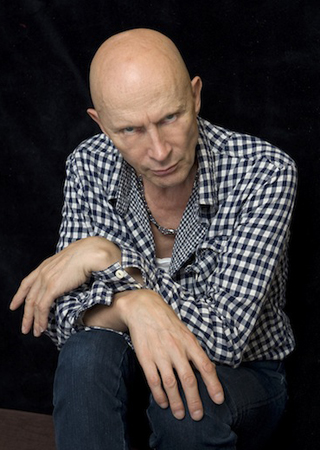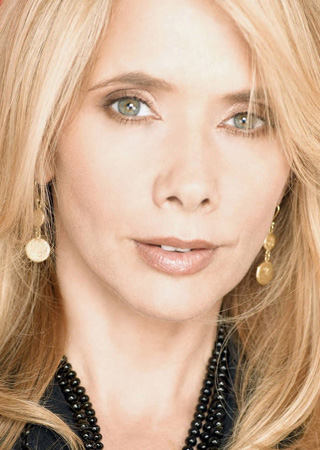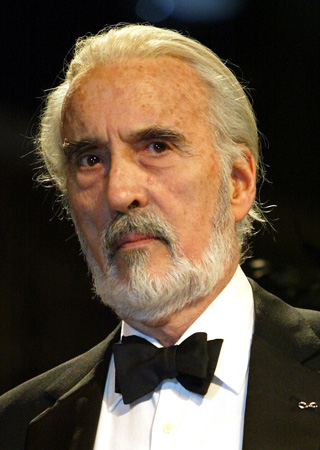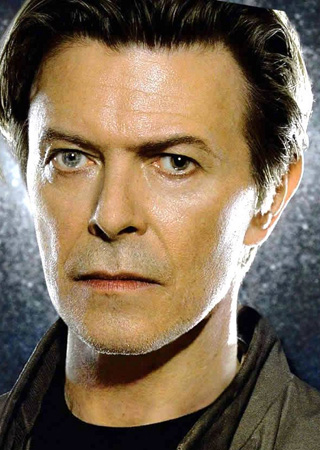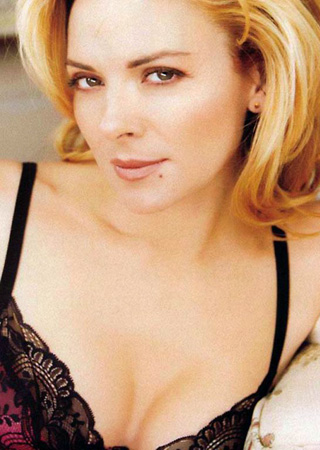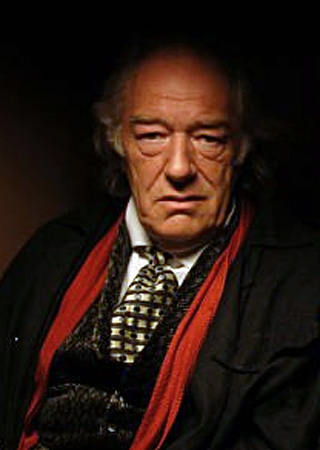Michelle Pfeiffer: Claws & Effect
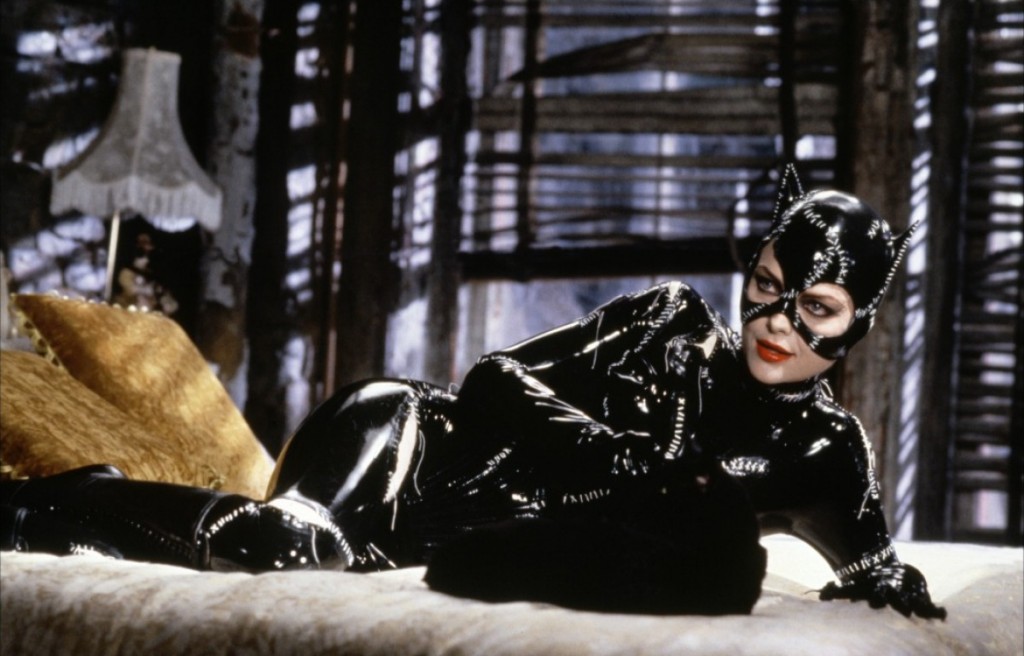
Michelle Pfeiffer
I did a cover feature on the first, ultra-secretive Batman, gleaning so much advance info from the comics press that the film company was furious. Batman Returns was above board. Well, nearly — to nab the exclusive I stiffed Empire on the cover pic, and wrote the weekend’s interviews on the plane back from Chicago so it would hit the streets that very Tuesday. Michelle Pfeiffer was piercingly beautiful: I met a journo there who said last time he interviewed her he’d rushed out, phoned his editor, and got him to hold the front page for the best feature ever. When he transcribed the tape, he realised she’d actually said nothing of interest — he’d just been hypnotised by those eyes…
‘She’s hot! She’s really hot! Aoooow! Man, that chick is hot!’ The Warner Bros hype machine is lurching belatedly into overdrive, and rumour has it that the first American preview of ‘Batman Returns’ is packed with ‘plants’ bussed in to scream. It may be that the audience rapture which greets the catsuited Michelle Pfeiffer’s first appearance is purely tactical; even so, it vocalises the collective Zeitgeist. There’s something about the former Miss Orange County beauty queen that puts men’s brains on hold; but dress her in a rubber body-suit specially made by a New York sex shop, and we’re talking flatliners. For safety’s sake, we’d better leave the whip till last…
Though ‘Batman Returns’ boasts bigger sets, weirder villains and more gadgets than the 1989 blockbuster, it’s her performance that will be most talked about. It’s an astonishing transformation for Pfeiffer, who in person is rather shy and insecure, and one which parallels that of her character(s) in the film. Pfeiffer plays dowdy, downtrodden secretary Selina Kyle who, after being pushed out of a window by her unscrupulous boss (Christopher Walken), takes control of her life. As the new Selina Kyle she becomes self-assertive and sexually magnetic, particularly to millionaire playboy Bruce Wayne; as Catwoman she becomes wantonly, playfully ruthless, getting her claws into Wayne’s alter ego, Batman.
Pfeiffer spent a month before shooting, four hours a day, training in martial arts, yoga, gymnastics and bull-whip. According to director Tim Burton, Pfeiffer ended up kick-boxing in four-inch heels on a sloping roof better than her stunt doubles. She worked on her voice as well as her body, finding a cracked-glass, from-the-gut register like the great doomed femmes fatales of the ’30s and ’40s. With the seams of her costume splitting wider from each fight, and lipstick gashed across her mouth like a livid wound, Pfeiffer brings an old Hollywood tragedy to a role that could easily have degenerated into farce. She ended up, quite literally, too sexy for her cat.
‘There’s one scene in the film where cats are crawling all over me,’ she says, wrinkling her nose, ‘and I had like a strong odour by the end of the day. So I took a shower at work — washed myself, my clothes — then went home and took another bath. When I got into bed my cat Tracy (silly name, but it once had a companion called Spencer) went crazy, baring her fangs. I thought she’d attack me!’
Sitting primly on a hotel sofa the day after the screening, Pfeiffer seems embarrassed by the attention. Neatly dressed in a short black skirt, black tights and black jacket, her smile remains piercing even when asked how it feels to be a sex symbol, yet her thin fingers flutter off to fiddle nervously with a cushion. ‘I don’t really think about it a lot,’ she evades. ‘But if a part calls for it, and I read that I’ve been sexy, I think “good”.’
But there’s more to it than that: though Pfeiffer plays down the SM angle (‘it’s not an issue’) we have Batman and Catwoman, both masked and dressed in rubber, fighting viciously and falling in love. ‘Like life,’ she jokes, but the cushion is now being hugged like Linus’s security blanket. The costume itself was so tight as to be ‘uncomfortable — I’m talking painful. At first I couldn’t walk, breathe, hear or talk.’ There were reports that a scene of her chaining Batman to a bed was excised to achieve a PG-13 rating. Wasn’t there a worry that the fetishism would be too strong for a general audience? ‘I don’t think so. I mean, what? I lick his face, big deal.’
Tim Burton too, perhaps under advice from the studio, downplays this angle, but Michael Keaton bites. ‘There’s an obvious sexual tension,’ he says, ‘compounded by the physical fighting element that makes me [as Batman, one assumes] hotter in some kind of bad way.’ Keaton should know: he had a brief affair with Pfeiffer in the late ’80s, and one of their choreographed fight scenes became too real for comfort when Pfeiffer misjudged a kick to the Batballs. ‘Some kind of sexual feeling comes out of this direct physical contact that isn’t affectionate. Batman is confused by it, but at the same time probably says “whoah, what’s going on?” You start getting into some primal areas here.’
Primal areas
Primal areas are Tim Burton’s home territory. Somehow he has transformed an unhappy, nightmare-filled childhood (Vincent Price was his hero and later the subject of his first documentary) into the stuff of blockbusters. At 33, he now ranks as Hollywood’s fourth-biggest grossing director. ‘Pee-Wee’s Big Adventure’ was a kids’ movie for adults; ‘Beetlejuice’ was the horror-comedy that confounded box-office expectations, and made it possible for Burton and Keaton to tackle the Dark Knight. ‘Batman’ subsequently took an astonishing $400 million at the box office, plus $I50 million in video sales and $1.5 billion in merchandising. But Burton’s chef d’oeuvre was ‘Edward Scissorhands’.
At this stage Burton had the clout to make whatever he liked, and it showed; ‘Batman Returns’, also made very much on his own terms, shares many of the ‘Scissorhands’ themes. But at the moment, Burton’s simply too bonkers to talk intelligently about this. Feet tapping wildly, hands spiralling off into the stratosphere, peering from under a fringe that could use the Scissorhands touch, he giggles: ‘I’ve got bats coming out of the walls! It’s the Batman DTs!’
So here goes. Danny DeVito, extraordinary as the huge-bellied, beak-nosed, sex-mad Penguin, is given flipper-like hands — like Edward’s scissorhands, they reinforce his alienness, and preclude sexual contact. The fairytale sets, totally redesigned by Burton and Bo Welch, have a Scissorhands look emphasised by lashings of snow, and composer Danny Elfman reprises his nursery tinklings — ‘The Nutcracker Suite’ punctuates the bombast. But the strongest echo is the alliance of pleasure and pain that runs throughout ‘Batman Returns’. In ‘Scissorhands’ Burton went one up on John Waters’ ‘Cry Baby’, which had the achingly beautiful Johnny Depp dripping tears: Burton had him scarred and helpless, and teenagers swooned.
Michelle Pfeiffer tries to sum up the appeal: ‘Tim’s films have a… an innocent darkness to them. It’s not adolescent — it’s too provocative and insightful for that. It’s as profound, as honest, as a six-year-old can be before he gets screwed up.’
‘Tim’s handprints are all over “Batman 2”,’ says Keaton, who knows him well. ‘He had more freedom, even though he was facing a lot of pressure from the higher-ups.’
The first ‘Batman’ ran away from him. Budgets inflated, the press went crazy, Kim Basinger and Jack Nicholson kept expanding their parts, and Burton admits the result was far from satisfactory. He vowed never to do a sequel, but was tempted back by the chance to do it right, without interference. ‘Anyway, take Woody Allen and Fellini,’ Burton defends wildly. ‘Do they make sequels or not? It’s not “Satyricon 2”, but they do have similar themes.’
As for there being no interference, it seems remarkably convenient that Burton should have become keen on adding nifty new features to the Batmobile, computerising the Batarangs and devising a Batglider and Batboat. Burton maintains he just thought it would be fun, but the men in suits adding up the $1.5bn merchandising profits and arranging licensing deals with 130 companies for ‘Batman Returns’ (Coca-Cola and McDonald’s alone will add $35m to the promotional budget) can’t have been complaining. In fact, Burton wreaks a subtle revenge in ‘Batman Returns’: the hideous Penguin, persuaded to run for mayor by an unscrupulous mogul, is tormented by beaming image consultants. One thrusts a cigarette holder in his mouth: ‘We’ve been through that before,’ snarls the Penguin, throwing it to the ground. (The cigarette holder, the only recognisable link between this grotesque creation and the camp ’60s Penguin, nevertheless adorns the posters and merchandising.) The Penguin terminates the meeting by biting a marketing man’s nose off.
Unrecognisably thin without the layers of Penguin padding, Danny DeVito snatches a break from directing his epic trade union bio-pic ‘Hoffa’. He too seems under instruction to play down interference. The publicity blackout during filming was total, with ID cards issued to the crew and prosecution threatened when photos of him in Penguin costume were leaked to the press. DeVito now claims that he himself insisted on the ban. ‘I had to stay in the Batman world, any intrusion was jarring when I started working on the character. I couldn’t see anyone on set; no family, no friends, no business associates — none of the studio execs, which was a joy.’
Shooting a nightmare
Shooting the sequel was, if anything, a bigger nightmare than the first film, and budget estimates range from $70m to $100m – as much as ‘Terminator 2’. Off-screen, re-writer Wesley ‘Cape Fear’ Strick battled Daniel ‘Heathers’ Waters unsuccessfully for a co-writing credit, and the two new executive producers are suing Warners for a percentage of the gross. Everyone was shattered by the news, a month into filming, that the original Oscar-winning designer Anton Furst had committed suicide.
Crew and cast were taxed to the limit. Quite apart from the 12 huge sets, the elaborate make-up and an army of 36 real penguins, 36 mechanical penguins and half-a-dozen midgets in penguin suits, Burton insisted on lowering temperatures on the sound-stage to just above freezing point to replicate the Penguin’s ice palace. Everyone got sick, except for Burton, wired up on a cocktail of coffee, pop-tarts and pure adrenaline.
Poor Michelle Pfeiffer, dressed only in skin-tight rubber, suffered most; one scene was re-shot again and again until she realised the problem was not her acting, but her frozen face. ‘The suit was no protection at all,’ she shivers. ‘It was like walking down the streets of New York in the middle of winter in a wet wetsuit. When I first arrived on set I was constantly getting lost because they’d move the buildings around. Michael Keaton started later, and when he arrived I had a thousand questions, I just felt so lost and discombobulated. He was a great comfort; he explained it was perfectly normal to feel that way!’
As for Keaton, the Batsuit in the first film was so stiff he could hardly move. And though the new model was far more flexible, he never did find a good answer to the age-old question, ‘how do superheroes go to the toilet?’. Recurrent lumbar problems led him to re-christen himself ‘Backman’.
Keaton’s a funny guy. Jumping about in Lennon specs and hiply sockless, he likens finding your own comic timing, spin, rhythm, to jazz musicians who find felicity in that certain dissonant chord or extra beat. His humour, he says, comes from his mother: ‘She’d do this thing which was at the same time like her, and yet not like her at all. Manners were very important at the dinner table, we’d sit to attention. But once, twice a year she’d set my little brother up by saying, “Doesn’t this food smell funny?” And Paul would fall for it every time. He’d bend down to smell and she’d push his head right in it.’
Keaton came up through the stand-up circuit but little of his twisted humour, let alone the wild histrionics that electrified ‘Beetlejuice’, comes out in the film. His Batman is less of a vacuum than before, but Keaton still seems uncomfortable playing so straight. Again, the true stars are the villains. Given Burton’s reluctance to do another sequel, Warner Bros could do worse than spin Pfeiffer’s Catwoman off into a separate series. Which draws us back to the whip. Pfeiffer manages to dodge the subject until near the end of the interview, the cushion now playing life-raft. ‘I still have my whips. It’s weird, you mention it and everyone gets so giggly. I had this amazing teacher, and he has this very unusual approach to the whip. There was a beauty, an elegance and a sexuality to it — an almost graceful, dance-like quality which at any moment could turn violent, which was much more threatening and certainly much more feline and more feminine. It’s really lethal, though. I injured myself a couple of times, and accidentally drew blood on my teacher, my… whip-master.’ Whip-master? ‘I know, it sounds funny. Of course I’m so used to it, I forget how people respond.’
And she still can’t see the SM overtones? ‘Really, I see it as metaphorical. When Selina Kyle turns herself into Catwoman, it’s a statement about women coming into their own power, which is a strong thing in our society. If you look at how the comics have changed over the decades, you’ll see Catwoman represents the women of that era. In the ’50s she is voluptuous and kittenish. A more dominant character starts to evolve around the ’70s, and she becomes more muscular and streamlined. This Catwoman is definitely a reflection of what’s happening today.’
There’s another reason why Pfeiffer fought the likes of Sean Young and Madonna for the part after Annette Bening dropped out. When the ’60s Batman TV series began, Pfeiffer was just eight years old, and she looked to Catwoman as a major role model: ‘She was both bad and good, and little girls are brought up to be good. There were some lines cut from the movie that I felt summed up the character: “Little girls are brought up to wear pink panties, and little boys are brought up to conquer the world.” ‘
Whether Batman will again conquer the world when the film opens across the States this week remains to be seen; with the help of the awkward, shy little girl who learned to unsheathe her claws, he just might.

